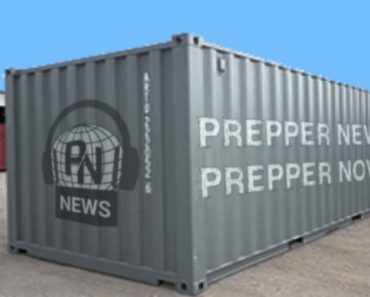We’ve all heard the climate change alarmists and their predictions of doom. Silent Spring, the book that I personally think really launched the climate crisis movement was published in 1962, more than six decades ago. Since then, one climate change “expert” after another has told us the world will end through either global warming or global cooling. A lot of islands and coastlands are supposed to be underwater right now, but the only ones which seem to have sunk are in the Solomons. With those being the only ones, I seriously doubt it’s because of worldwide ocean levels rising catastrophically.
This Device Easily Turns Air Into Water!
Yet the climate crisis continues… or at least they tell us it does, even after so many failed predictions. We’re always 10 years away from all life, as we know it, coming to an end, due to the “climate crisis.” For decades that was nothing more than noise; but now it’s beginning to affect our lives. Ever since Biden became president, we’ve seen an acceleration in efforts by the left to push through their environmental agenda. AOC’s “Green New Deal” is slowly becoming a reality, thanks to presidential edicts and the redefinition of “infrastructure” used for the trillion-plus-dollar “infrastructure bill.”
The two biggest parts of this green push are green energy and electric vehicles. However, there are many other parts of our daily lives which are under attack, such as the types of light bulbs we use, the appliances we buy and the way we heat our homes. Anything that can be said to produce any pollution whatsoever is subject to attack by climate crisis activists.
What this means is that there are a lot of things which we take for granted, which are under scrutiny. Just recently a law banning most incandescent light bulbs was put into effect by President Biden. While I agree that LED bulbs are a big improvement over incandescent bulbs, saving energy and lasting longer, I don’t agree that LEDs are the solution for everything and everyone. While they are cheaper over the long run, they are more costly to purchase, making this a difficult change for the poor, who have a hard time paying for them.
All of this effort to take things out of our lives, limiting our choices to generally more expensive ones, really doesn’t matter. That won’t stop the people pushing it; but it is clear that everything it is costing society at large isn’t going to give any return. They even say that themselves, with the Paris Climate Accords having a $3 trillion price tag, while eliminating 6.5 million jobs. But the cherry topping this particular cake is that China has pulled out of the accords. Considering that they produce more pollution than the rest of the world combined; that means our entire combined effort won’t make up for the pollution that they create.
With that being the case, I keep asking myself, why are we even bothering? Yet those who are pushing this narrative are firmly committed to it.
There’s really no way that those of us who haven’t bought into the climate hysteria can do a thing to stop the relentless push towards “going green.” Even President Trump, when he was in office, was only able to delay some actions, nothing more. As long as the political left is on their climate kick, they will use every trick in the book (and maybe invent a few new ones) to take things away from us in the name of saving the planet.
Our Vehicles
One of the biggest pushes we can see in the current political climate is the push towards electric cars. Auto manufacturers are being told by the government that X percent of their production has to be electric cars by such-and-such a year. It doesn’t matter if that’s practical or even possible; nor do those doing the pushing want to hear anything about the problems or disadvantages of electric cars. That’s their agenda and we will comply (with a strongly implied “or else” in there).
I’d hate to think about trying to bug out in an electric vehicle, considering their range limitations. An electric vehicle won’t be much good in a power outage either, whether short-term or a destruction of the grid. Should anything like that happen, we will need gas-burning vehicles, not electric.
I seriously doubt that they will manage to get rid of gas-burning vehicles in any of our lifetimes, no matter how hard they try; but you might not be able to buy a new one. As long as gas-burning vehicles exist, there should be gasoline available, although I expect the price to keep rising.
What this means is that regardless of what laws are passed and what happens to the market for cars, we should all keep at least one gas-burner around; preferable an old one that we’ll be able to work on ourselves. In that regard, it would be a good idea to have common replacement parts on-hand, like hoses, belts, starter, alternator and brakes.
The other thing to do is to stockpile gasoline. This can be tricky and some municipalities limit you as to how much you can have on hand. The other problem is that gasoline doesn’t store well for prolonged periods of time. You can add fuel stabilizer; but that only lasts so long. Better than that, cycle your gas stockpile, using the old and replacing it with new, so that you always have fresh gas on hand.
Our Energy
One thing that all this climate change hysteria is doing, which may play to our advantage, is putting a lot of tax dollars into alternative energy. While dollars put into commercial wind turbines and solar farms don’t do you and I the least bit of good, the government has also offered tax incentives for putting wind and solar power on our homes. That fits in well with our survival mentality, allowing us to get a little bit closer to going off-grid.
Another good way of using the green energy initiatives to your example is to take advantage of the tax credit for changing your home’s HVAC system for a heat pump. If you live in a climate where you have to heat your home, more than cool it, a heat pump can save you 20 to 40 percent off of your energy bill. They don’t save as much in cooling mode, so that probably wouldn’t be as good an investment for those living in the south.
Our Heating
Speaking of heating, most preppers plans include using wood for heating, should the power go out. This, of course, offends the climate change activists, as wood produces visible smoke and soot; something they can see as pollution. The EPA has already gone after wood-burning stoves, tightening up regulations on acceptable emissions levels. Chances are pretty high they’ll be doing that again, making it more difficult for us to buy a wood-burning stove for our home.
The only real way to beat that, is to make sure you’ve got a wood-burning stove before they make any such changes. Avoid the type that use pellets, as it will probably be hard to get the pellets during a time of crisis. Besides, they may decide to restrict sales of pellets or require they be changed into some other material that doesn’t pollute, but doesn’t heat either.
Our Appliances
This brings us to the next area that our green friends are attacking; our appliances. President Biden recently tried to push through a restriction on gas stoves, making them illegal and forcing everyone to go to electric. He was unsuccessful in that attempt; but that just means that they’ll try again later. If there’s one thing we can count on with environmental activists, it’s that they don’t give up.
The attack on gas ranges might seem a bit confusing, especially when we consider that a couple of years ago, the same environmentalists were pushing natural gas-fired power plants as a replacement for coal-fired ones. What’s happened, is that they succeeded in demonizing the coal-fired plants, so have moved on to the next target of opportunity, natural gas. Considering that natural gas now provides just under 40 percent of our electricity, that’s a pretty big target.
Natural gas isn’t the only energy target the environmentalists are going after. They’re also going after nuclear power, which isn’t surprising and hydroelectric, which is. Apparently, the hydroelectric dams offend their sensibilities because they harm habitats for fish, even while creating habitats for other fish. Something like 2,000 dams have been destroyed in response to legal action by environmental groups.
Follow me on this; at the very same time that environmental activists are trying to get us to use all-electric everything, are also attacking the means of electrical production, reducing the amount of available electricity. California and Texas are already using rolling blackouts to control electrical usage in the summertime, the rest of the country will probably be forced to follow suit, if the environmental activists get their way.
Ok, so what do we do about this? I’ve already talked about producing our own electricity, something that seems like the only way of ensuring that we’ll have electricity to use. It would take a lot of solar panels to provide what we’re accustomed to using on the average day, probably more than we can fit on our homes. But the more we can produce, the better.
At the same time, we need to find ways to reduce our own power consumption, so that the reduction in available power doesn’t affect us as much. Surprisingly, this is one of those rare areas where the environmental activists are helping us out. While their push for reducing energy consumption is taking options away from us, it is also forcing manufacturers to produce more energy-efficient appliances. These appliances, many of which carry the EnergyStar logo, allow us to get the same job done, using less electricity. Replacing any existing appliances that we have, with these more efficient ones will save us money on our electricity bills, as well as help ensure that we can power them with the electricity we are producing ourselves.
Conclusion
All in all, what we need to do, as environmental activists find ways of using their hyped-up message of climate change to deny us electric power and the things that use it, is to keep finding ways around their regulations and limitations. Fortunately, that’s not all that hard to do, especially if we’re a bit creative in making our purchases. It may become harder as regulations become more restrictive; but I’d put my money on American industry to find better ways of doing things.
As we make these changes, it will hopefully help us to prepare for upcoming disasters. Since one of our biggest concerns about living in a post-disaster world is lack of electricity; the idea of replacing the things we use every day, with ones which are more efficient makes sense.



























